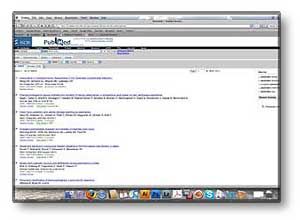As a textbook author, I am often questioned about information sources for EMS. On many occasions I have heard somebody defend a practice “because I read it in one of your books.” In fact, I heard this recently in Florida. Perhaps it is time to talk about books and EMS information sources.
Although the educational world is changing, printed textbooks remain a core feature of EMS education. There are four or five good EMT-level textbooks out there, and several paramedic textbooks. Writing and publishing a paramedic textbook, such as my books Paramedic Care: Principles an Practices and Essentials of Paramedic Care, are gargantuan tasks that involve my co-authors and a whole gaggle of editors, artists, and similar professionals. The time it takes to write a textbook as comprehensive as ours takes years — literally. A textbook revision in which the book is updated can take many months. It is not a fast process.
Once the revisions have been completed, the text goes into a review and editing process. Then, when all is right, it goes into production. The review and production process can last more than a year. Thus, once a book is finally printed and shipped, the material may be one or two years old. This is not unique to EMS books.
Most EMS textbooks are on a three to four year revision cycle—maybe more depending on the publisher. By the time a book reaches the end of the cycle, the material may be five to six years old. Despite this timeline, EMS textbooks are accurate, current, and are the major source of information for initial EMS education. Coupled with great instruction and clinical experience, textbooks provide a solid basis for EMS practice.
However, textbooks do have their limitations. There is no way that a textbook can keep you abreast of the changing science and practices in EMS. The best source for current EMS science is the scholarly journals. Scholarly journals are peer-reviewed publications. Articles submitted to these journals undergo a rigorous review process and must meet certain guidelines. The principal peer-review journal for EMS is Prehospital Emergency Care. It is coordinated through the National Association of EMS Physicians and is published quarterly. Other emergency medicine journals such as Annals of Emergency Medicine, Academic Emergency Medicine, and American Journal of Emergency Medicine are also good sources of EMS science and practices.
Many in EMS find it difficult to access the scientific literature. The best source is an Internet database called PubMed. This service is provided by the United States National Library of Medicine and the National Institutes of Health and possesses over 18 million citations. The system is easily searchable using key words and Boolean logic. Generally, when you enter a keyword, you will get numerous “hits” of articles that match your keyword. You can look through these entries to find the articles that meet your needs. When you click on these articles, the citation and abstract is displayed. Some of the full text articles are accessible through PubMed (either as PDF files or HTML files), while others are not.
 PubMed is provided by the United States National Library of Medicine and the National Institutes of Health and possesses over 18 million citations. |
If you are affiliated with a university or college, you often will have access to many of the journals through PubMed or through an electronic journal system. As a professor at the University of Nevada School of Medicine, I have access to an academic version of PubMed through the Savitt Medical Library in Reno that provides immediate access to full text articles in many journals. This is an expensive system, and is primarily limited to academics. Many hospitals will have a medical library with PubMed and scientific article retrieval, and many of these are eager to assist EMTs and paramedics. Most articles can be purchased (they can be pricey) from the journal publisher if you cannot find them elsewhere. A nice feature of PubMed is the notification feature. Here you can enter a few key words and PubMed will send you an email every month or two with all of the new additions that match your key word. This is a great way to stay up to date on the science.
Beyond the peer-review journals, the trade magazines such as JEMS and EMS Magazine are good sources of information. While these magazines are not scientific in terms of the peer-review process, they publish nothing but accurate and reputable information. Also, some of the specialty periodicals such as EMS Insider and EMS Best Practices provide great information.
Once you finish your initial education, please keep your textbooks handy for review and reference (and refreshers). And while your textbooks do serve a purpose, you should also look at the more frequently published sources of information described here. However, please beware that much of the information on chat lists and the Internet (including Wikipedia) can be inaccurate. In scholarly writing, such sources are usually unacceptable as authoritative material.
I have always thought Mark Twain was on to something when he wrote, “The man who does not read good books has no advantage over the man who cannot read them.” Textbooks will continue to play a major role in EMS and the major textbook publishers work diligently to assure that the next editions of their books are better than the last. Learn to look beyond the books and you will continue your education in an orderly and efficient fashion.











